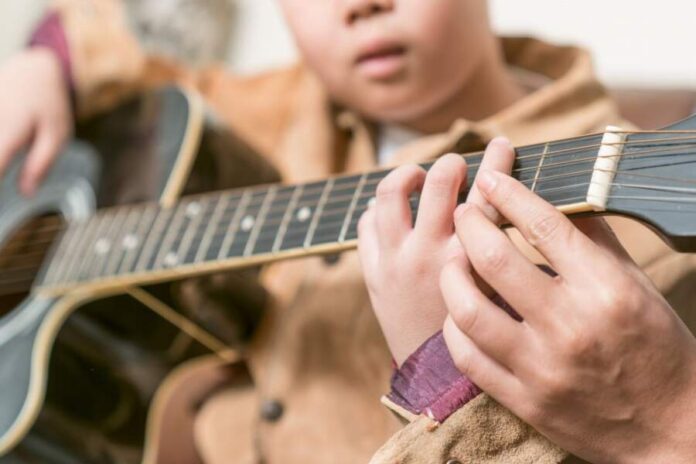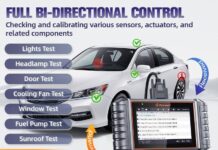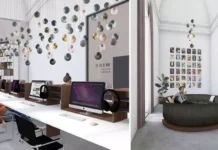Inclusion and diversity are at the center stage of many school systems because most schools aim to empower each student and facilitate a comfortable and welcoming environment for all.
But what is the best way to foster and create accessible and effective music teaching strategies? To achieve accessibility, music educators must offer teaching strategies that address the learners’ variability. Learn more below.
Incorporate Technology
Traditional means of music education involved the use of paper, pencil, and acoustic instruments. These methods are limiting, especially for students with learning disabilities. Thus, incorporating technology as a music teaching method promises to enhance student engagement.
One of the primary technology trends in music education is the increased use of mobile devices and online services. Some of the online services and mobile device goals are enhancing music notation, production, and aural skills.
The online services provide accessible tools and knowledge for every music student to develop musicality easier and faster than before. Some of these online services and devices include:
Ear training
Online sites like www.useyourear.com provide one of the best places where students can train their ears. Ear training involves the study of music theory, where music students learn how to effectively identify solfege, rhythms, chords, melodies, intervals, and pitches.
Digital Audio & Workshop (DAW)
This resource allows music students to record and compose original music or cover songs. Some of the available software under this category include:
- Audacity (no MIDI)
- Soundtrap
- BandLab
- GarageBand
- Pro Tools
- Logic
- Ableton Live
- Notion
Video recording on iPad
With an Ipad, students can have access to video recordings. The video recordings provide an easy way for music educators to offer effective feedback, record learners’ performances, or create music tutorials.
Online quiz tools
Online quiz tools like Playposit, Plickers, Quizziz, and Kahoot allow music educators to create quizzes. The best thing about these tools is that they enable music teachers to:
- Reinforce and test music theory knowledge.
- Test tech knowledge and skills.
- Reinforce and test knowledge in music history and style.
Create an Inclusive Classroom
Inclusivity in a music classroom involves fair treatment of students of all gender, ability levels, backgrounds, and learning styles. The primary objective of inclusivity is to give each student the tools they need to achieve remarkable outcomes.
An inclusive classroom is one where educators adapt to each student’s needs and offer them a chance to collaborate. It is also a respectful environment where each student receives equal treatment.
One of the best ways educators can have an inclusive classroom is by building on each student’s strengths. In a music classroom, you can find that some students excel in songwriting while others are good at guitar or keyboard playing. Thus, the method of teaching music must be suitable for each student’s unique abilities.
Embrace the Artist-Teacher Within
Teaching through personal experiences as an artist-teacher is one of the best ways a music educator can provide accessible music education. Artist-teachers offer a tangible link between art-based learning and the creative process.
Embracing the artist within can ensure that music educators use their experiences as artists to create effective academic approaches, lesson plans, and curricula. The primary goal behind embracing the artist-educator within is to offer practical technique-based teaching and expose learners to new creative and emotional expression methods.
Focus on Engagement
Focusing on classroom engagement provides one of the most effective music teaching strategies. Classroom engagement increases students’ focus, attention, and interest. It also motivates students to engage in critical thinking.
Music teachers who use classroom engagement techniques have better outcomes in their classrooms. For instance, teaching through music can make the classroom more fun and livelier, ensuring that each student is focused.
However, achieving full classroom engagement requires music teachers to plan well on how to involve all music learners. Some of the best ways you can employ classroom engagement include:
- Incorporate instructional technologies, like computer software, to assist students in learning music composition and notation.
- Create a comfortable and welcoming environment by focusing on seating arrangements, noise levels, and lighting.
- Let students attempt to apply various musical concepts and offer them supportive feedback.
- Teach foundational concepts and skills in a way that enables each learner to use their favorite music genre as the study subject.
- Use multiple instructional methods so all learners can have numerous opportunities to understand the subject matter and participate fully.
- Learn the type of music each student loves listening to and create lessons based on that music. Make sure that you do not write off any genre.
- Provide opportunities for students to explore music production.
- Make audio, text, and video music more accessible.
Final Thoughts
Music Educators should aim to maximize the music learning of each student by making lessons inclusive and accessible to all. They should offer effective, empowering, flexible, and differentiated music teaching techniques. Apart from the above, what other innovative ways do you think music education can be accessible and inclusive to all?
Read Also: It’s Boring: How To Enjoy Studying Science



































































